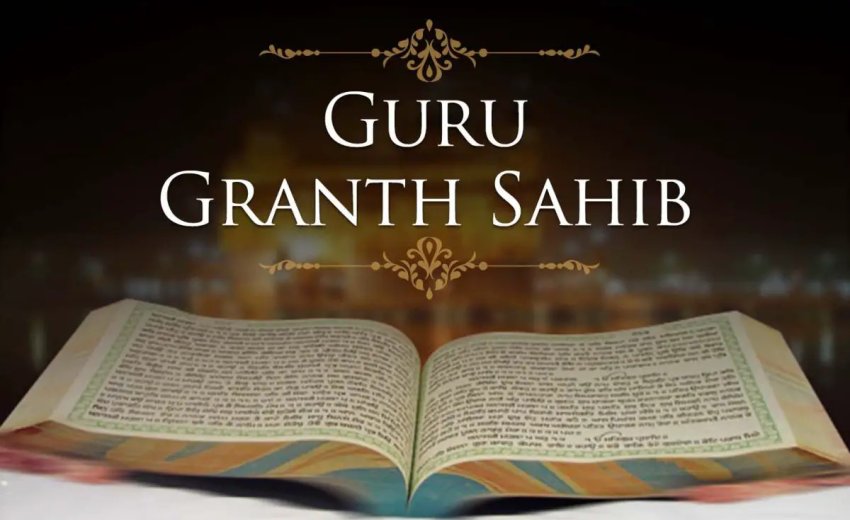Almost every Sikh must have heard the word ‘Akhand Path’, and most of them attended it atleast once in a lifetime. It involves reading the Sikh holy book, the Guru Granth Sahib, continuously for 48 hours. People do this for special events like births and deaths. They also do it for other important times. The reading is like sound healing. It sends out peaceful and positive vibrations. People who listen are encouraged to follow the teachings in the Guru Granth Sahib. They try to live by its messages of goodness and wisdom.
Let’s deep dive into the significance, tradition and regulations around the rejuvenating ‘unhindered’ holy reading of Guru Granth Sahib.
Akhand Path: An overview
The Akhand Paath involves reading the Siri Guru Granth Sahib without interruption, aiming to complete it within 48 hours. During this practice, once a reader starts their session, they read until the next person takes over. It's important to remember to keep your head covered while participating in the Akhand Paath.
The tradition
The tenth guru of the Sikhs, Guru Gobind Singh, initiated the Akhand Path tradition by declaring the holy book as his spiritual successor before his passing. He compiled the teachings of previous gurus and learned leaders of various faiths within it. Guru Gobind Singh is said to have stood and listened to the book being read by five different Granthis without moving, even during meals and baths. Years later, on his deathbed, Guru Gobind Singh encouraged Sikhs to honor his memory by listening to the holy verses in their entirety. He believed he would be "spiritually present when the Gurbani was being read." In a time of persecution for Sikhs, this belief provided strength to the community.
The Guru Granth Sahib was originally written in the Gurmukhi script of Punjabi. While translations exist, reading in Gurmukhi remains preferred in India. Some choose to have Granthis perform the reading, while others undertake the task themselves. Death rituals aim to provide solace, direction, and relief. During an Akhand Path, priests read in two-hour slots without breaks. Family members take turns listening and assisting. Whether at home or in a Gurdwara, people can listen to the recitation.
The Akhand Path begins with Karah Parshad placed as an offering. The Ardas prayer is recited, and a random lesson is selected from the book. Then the reading commences. After 48 hours, the ceremony concludes with devotional songs, another Ardaas, and distribution of Parshad. This is followed by Langar, where food from a community kitchen is served to all.
Must-follow rituals for respecting the tradition
Before you attend an Akhand Paath or participate in the holy recitation, here are a few things one must keep in mind.
How to start reading?
When switching readers, it's important that the person who's currently reading points to exactly where they are in the text. This helps the next person to easily see where to start reading from. Both the current reader and the next reader should overlap some words. This ensures that nothing gets skipped during the transition and that it's completely smooth. It's a simple but effective technique for maintaining continuity and clarity during shared reading sessions.
What happens when I get to the end of a volume?
In a standard four-volume set, volume transitions typically occur at midnight on the 1st day, 6 p.m. on the 2nd day, and 1:00 p.m. on the 3rd day. If a reader reaches the end of a volume during their reading session, the recommended practice is to smoothly retrieve the next volume without interruption. The volumes are usually stored atop the "manji" structure, behind the current volume in use, or within easy reach of the reader.
To seamlessly continue reading, it's essential to put away the completed volume and place the next one in front of them. This ensures an uninterrupted reading experience, promoting a smooth flow of the narrative. So, when encountering a volume change, remember to keep the reading momentum going!
What if the next reader hasn’t arrived yet at the end of my reading time?
When there's a problem, simply ring the bell beside you to alert the sevadar. Remember to continue reading until your replacement arrives. When the next person comes, show them where you're reading and wait until you hear the next reader taking over from where you left off.
Important Note
In Gurmukhi, the Akhand Path should be recited within 48 hours, without deviating into the specified 31 Ragas. English recitation, on the other hand, extends the completion time to over 72 hours.
During an Akhand Path, if a Hukam is taken at the program's conclusion, the Pathee, responsible for reading the Path, articulates the Gurbani they have reached during regular reading. The pace may slow, and clarity is emphasized. Notably, the first and last two lines are excluded from repetition in this instance. Following the Hukam, the Pathee seamlessly resumes the Akhand Path.
For an authentic Akhand Path experience, it is essential to recite the Gurbani loudly, clearly, and with precision. The adherence to these principles contributes to the meaningful execution of this sacred practice.
*Based on an article published in Sikh Dharma Worldwide on 17th October 2012

